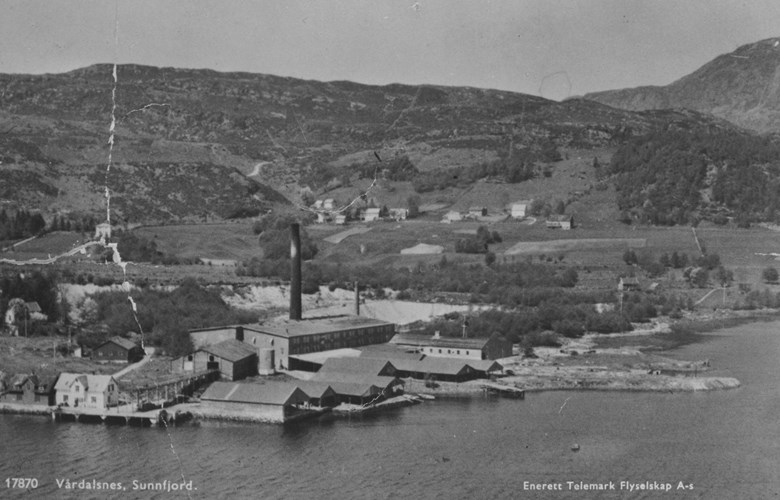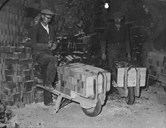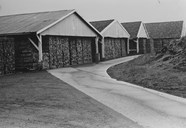Starting up
Vårdal Teglverk was established in 1897, with the mayor of the Fjaler municipality, David Bakke, as an enthusiastic advocate. From 1902, the brickyard was managed by Jørgen Helgerud from Øvre Eiker. He had a background as manager of Sandefjord Teglverk (brick and tile works), and he was a master brick maker.
The market
One reason why this enterprise did better financially than the works at Helle, could be that a sales office was established in Bergen quite early. Bergen was its main market, and it was important to have good contacts among the master bricklayers in the town. They made the decisions on where to buy the brick.
Problems with quality
As at Helle, the clay at Vårdal was not of the highest quality, but it was good enough to produce burned brick. An unfortunate decision was made, however, when the furnace was planned, with an interior profile too long. The historian Hans Zakariassen has pointed out that the result was disastrous, with great quantities of stone burnt a light colour, which was of little use in the coastal districts.
Production
Generally it was during periods with a demand for brick that production went on all year non-stop. During the winter season, building activity slowed down. Low temperatures also made it difficult to dig clay without frost clods. So production was smoothest in the summer months. In the 1950s both brickyards were short of manpower. They were therefore modernised, but this did not lead to better stone quality.
Jobs and organised labour
The brickyards in the Dalsfjord area provided much-needed jobs in the small communities, 35-40 jobs at each. Many combined work there with smallholdings. During recessions, when the storage rooms were full, it was good to have many strings to one's bow. After the war, the works were modernised, and in the 1950s, 65-70 men were employed at the two brickyards.
In the 1920s, the demand for brick was weak, and lay-offs were frequent. Several were unemployed for periods. Yet the organised labour movement came late to the Dalsfjord area, where most of the workers had their backgrounds on smallholdings, and often had smallholdings of their own. Only in the 1930s, the Vårdal Arbeidarforeining (trade union) was founded.
Liquidation
During the 1960s, operations at Vårdal Teglverk were gradually reduced, and was closed down in 1971. The building suffered fires and was later torn down.






